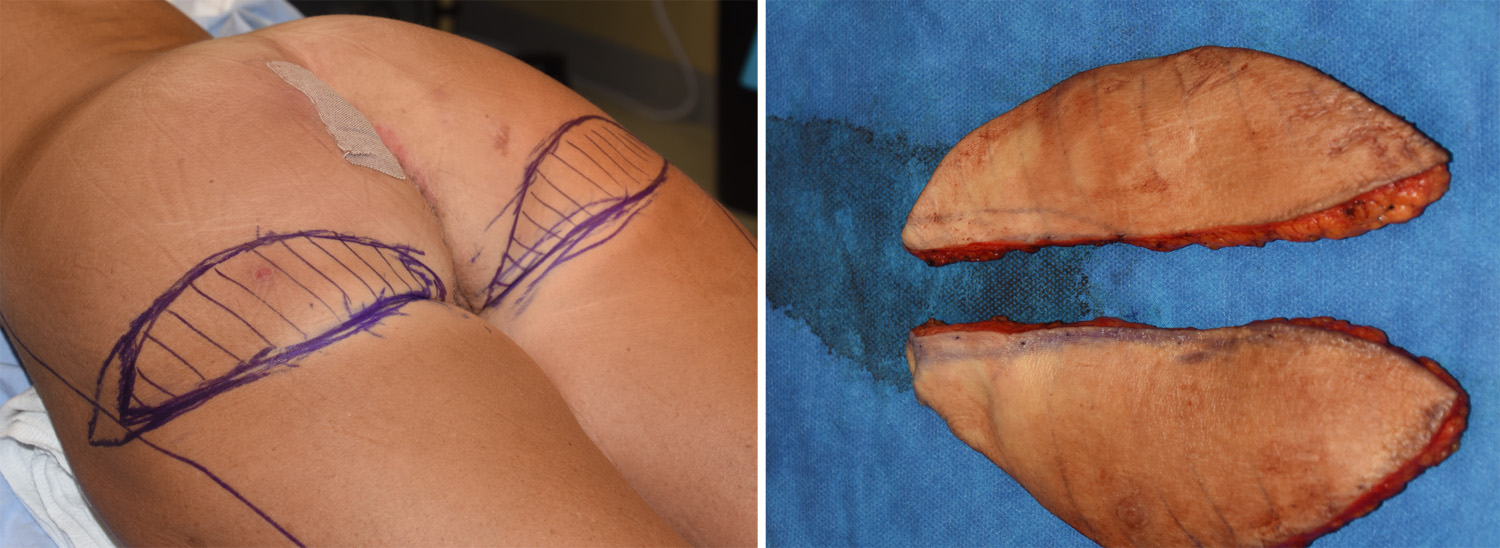
The decision to undergo a buttock lift is often the culmination of a long personal journey, usually following significant weight loss or as a remedy for the natural effects of aging and gravity. This procedure, more formally known as a component of lower body lift surgery, is not merely about increasing volume; it is a complex reconstructive contouring effort aimed at excising excess, inelastic skin and repositioning the remaining tissue to achieve a firmer, more lifted, and aesthetically proportional silhouette. Unlike simpler fat transfer procedures, a true buttock lift focuses heavily on skin laxity and tissue migration, addressing the circumferential sagging that often affects the entire belt line—the buttocks, hips, and outer thighs. Understanding the methodical stages of this surgery, from the initial consultation and planning to the execution of precise incisions and the critical post-operative recovery phase, is essential for anyone considering this significant transformation, as it reveals the detailed artistry and technical rigor required to reshape the lower torso effectively.
Consultation and Planning: Assessing Tissue Laxity and Aesthetic Goals
Understanding the methodical stages of this surgery, from the initial consultation and planning to the execution of precise incisions and the critical post-operative recovery phase, is essential for anyone considering this significant transformation.
The journey toward a buttock lift begins with a thorough consultation that goes far beyond a casual discussion of desired outcomes. This initial phase involves a meticulous physical examination to assess the quality of the patient’s skin, the degree of tissue laxity, and the distribution of underlying fat. The surgeon must evaluate the specific patterns of sagging, which may be more pronounced laterally (hip rolls) or inferiorly (beneath the gluteal crease). Crucially, the surgeon needs to establish a realistic conversation about scar placement and visibility, as this procedure necessitates substantial incisions to remove large amounts of redundant skin. The patient’s aesthetic goals must be synthesized with what is anatomically and surgically achievable, often involving discussions about potential volume addition (if necessary, through concurrent fat grafting, known as a Brazilian Butt Lift, although the primary focus remains on the lift). This stage dictates the precise incision design and the sequencing of the operation, establishing a roadmap for circumferential body reshaping.
Anesthesia and Patient Positioning: Ensuring Safety and Access
A critical preparatory step involves the administration of general anesthesia, ensuring the patient remains entirely comfortable and unaware throughout the lengthy procedure.
A critical preparatory step involves the administration of general anesthesia, ensuring the patient remains entirely comfortable and unaware throughout the lengthy procedure, which can often take several hours due to the extent of the contouring. Once the anesthesia team confirms stable vitals, patient positioning becomes paramount, as the entire surgery cannot be performed in a single, static position. The surgeon will typically start by placing the patient in the prone position (face down) to access the posterior aspect, which includes the back, flanks, and buttocks. Strategic padding and securing the patient’s limbs are vital to prevent nerve injury and maintain a sterile field. During the procedure, the patient will often need to be carefully turned to the supine position (face up) to address the abdomen and anterior thighs, highlighting the procedural complexity of a full lower body lift, where the buttock lift is the key posterior element.
The Posterior Incision Pattern: Excising Excess Skin
The most common incision pattern for the buttock lift component is the high-lateral tension pattern, often described as a bikini-line or belt-line incision.
The technical execution of the buttock lift begins with the incision. The most common incision pattern for the buttock lift component is the high-lateral tension pattern, often described as a bikini-line or belt-line incision. This incision extends horizontally across the lower back, often dipping slightly to follow the natural contours above the buttock crease and then curving down over the hips and flanks. The incision serves as the gateway for the excision of the large, circumferential strip of loose skin and underlying subcutaneous fat. The width of the excised skin strip is precisely measured based on the preoperative pinch test and the amount of lift desired. Once the skin and fat are removed, the remaining skin below the incision (the buttock tissue) is pulled taut, upward, and laterally. This tensioning is the lift component, effectively raising the gluteal crease and creating a smoother transition from the back to the buttocks.
Deep Tissue Suspension: Anchoring the Lift
Unlike a simple skin excision, the long-term success of a buttock lift depends critically on the surgeon’s ability to anchor the deep tissues to a stable underlying structure.
Unlike a simple skin excision, the long-term success of a buttock lift depends critically on the surgeon’s ability to anchor the deep tissues to a stable underlying structure. Without robust deep tissue suspension, the tension placed on the skin closure would be excessive, leading to widening of the scar and a rapid recurrence of sagging (ptosis) due to the weight of the gluteal tissue. The surgeon utilizes specialized, strong sutures placed deep beneath the layer of excised skin to secure the newly lifted buttock tissue—specifically the superficial fascia and underlying layers—to the fixed structures of the lower back, often including the deep fascia near the tailbone or the sacrum. This internal scaffolding bears the primary load of the lift, relieving tension from the outer skin suture line and ensuring the long-term maintenance of the contoured result, which is a hallmark of an advanced body contouring procedure.
Adipose Tissue Sculpting and Repositioning: Creating Contour
Simultaneously, the surgeon meticulously sculpts the underlying adipose tissue and may utilize a portion of the patient’s own excess fat to enhance the projection or contour of the gluteal area.
While the primary goal of the lift is skin tightening, the procedure often includes significant adipose tissue manipulation to refine the shape. Excess fat in the flanks or the love handle area, which often merges with the sagging tissue, must be aggressively addressed, typically through a combination of direct excision and liposuction. Removing this fat accentuates the newly tightened waistline and enhances the visual separation between the torso and the buttocks. Simultaneously, the surgeon meticulously sculpts the underlying adipose tissue and may utilize a portion of the patient’s own excess fat to enhance the projection or contour of the gluteal area. This combination—tightening the posterior skin envelope while strategically filling or defining the deeper tissues—allows for a three-dimensional reshaping that achieves a fuller, yet simultaneously firmer, appearance.
Multi-Layer Closure: Minimizing Scar Tension
The closure is the final, painstaking stage of the procedure, requiring multiple distinct layers of suture material to achieve optimal wound healing and minimize the appearance of the inevitable scar.
The closure is the final, painstaking stage of the procedure, requiring multiple distinct layers of suture material to achieve optimal wound healing and minimize the appearance of the inevitable scar. Given the high degree of tension involved in pulling the buttock skin upward, this multi-layered approach is critical. The deep, dissolvable sutures placed during the suspension phase (as discussed above) absorb the primary tension. Subsequent layers close the subcutaneous tissue, helping to flatten the scar line and ensure that the skin edges meet without undue stress. The final layer involves the most superficial skin closure, performed with meticulous attention to detail to ensure precise alignment of the skin edges. This layered technique is designed to distribute the tension across the deeper tissues, thereby allowing the superficial skin closure to heal cleanly, which is paramount for the long-term aesthetic outcome of the highly visible belt-line scar.
Immediate Post-Operative Care: Drains and Garments
Immediately following the procedure, the surgical sites are dressed, and the patient is typically fitted with compression garments.
Immediately following the procedure, the surgical sites are dressed, and the patient is typically fitted with compression garments. These specialized garments are essential for minimizing post-operative edema and providing continuous support to the newly sculpted contours. Additionally, due to the extensive undermining of the tissues and the potential for fluid accumulation, surgical drains (small tubes placed beneath the skin) are often inserted before closure. These drains are crucial for removing serosanguinous fluid (a mix of serum and blood) that naturally collects in the surgical space. Allowing this fluid to accumulate—a condition known as a seroma—can delay healing, increase the risk of infection, and compromise the final contour. The drains are typically kept in place for several days to over a week, until the fluid output significantly decreases, a process that is closely monitored by the surgical team.
Initial Recovery: Navigating Pain and Positional Restrictions
The first two weeks of recovery are characterized by significant swelling and bruising across the lower torso and necessitate strict adherence to positional restrictions.
The recovery phase following a buttock lift is considerably more demanding than many less invasive procedures due to the extent of tissue mobilization. The first two weeks of recovery are characterized by significant swelling and bruising across the lower torso and necessitate strict adherence to positional restrictions. Patients are typically advised to minimize direct pressure on the newly lifted and sutured buttocks. This means avoiding sitting directly on the buttocks for prolonged periods and utilizing special pillows or positioning techniques (such as leaning forward or reclining) to distribute weight away from the primary tension line. Pain management is a primary focus during the initial days, typically controlled with prescription analgesics. Ambulation, though slow and assisted, is encouraged early on to promote circulation and reduce the risk of DVT, but strenuous activity and heavy lifting must be completely avoided to protect the complex deep tissue suspension.
Long-Term Healing: Scar Maturation and Final Results
The resulting scar, though placed strategically along the waistline, will take many months to fully mature and soften.
While the initial shape change is visible almost immediately after the surgery, the final aesthetic result of a buttock lift is not apparent for several months. The intense swelling gradually subsides over the course of six weeks to three months, and the tissues settle into their final position. The resulting scar, though placed strategically along the waistline, will take many months to fully mature and soften. Scar maturation is a dynamic biological process that can last a year or more, during which the scar may initially appear red and raised before fading to a flatter, paler line. Patients are often advised to engage in specific scar management protocols, which may include silicone sheets or specialized massage. Maintaining a stable weight and a healthy lifestyle is absolutely essential, as significant fluctuations in body mass can stretch the skin and potentially compromise the longevity of the meticulous contouring and lifting work that was performed.
The Definitive Impact on Body Proportion and Confidence
The ultimate outcome of the buttock lift is a definitive, dramatic improvement in the shape and proportion of the entire lower body.
The ultimate outcome of the buttock lift is a definitive, dramatic improvement in the shape and proportion of the entire lower body. For individuals who have lost a substantial amount of weight, or who have struggled with severe skin laxity, the procedure resolves the major physical and psychological burden of hanging, redundant skin that often compromises mobility and clothing fit. The surgery transforms the silhouette by creating a tighter, firmer contour that is better projected and aesthetically balanced with the torso and thighs. This physical change is frequently mirrored by a significant boost in the patient’s self-confidence and body image, allowing them to participate in activities and wear clothing styles that were previously out of reach. It is a powerful reconstructive operation that addresses a complex physical deformity, delivering functional as well as aesthetic benefits that are both long-lasting and profound.
